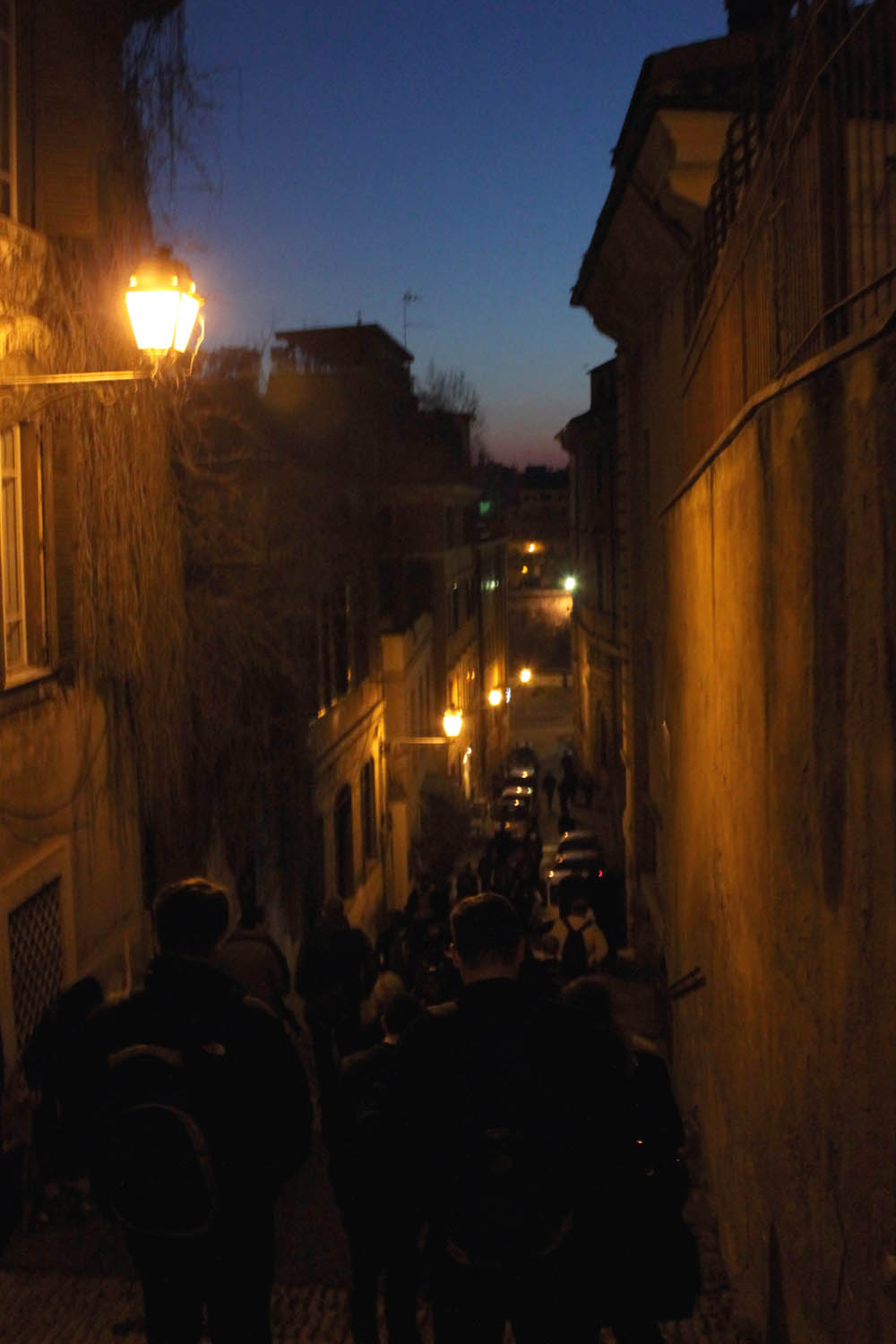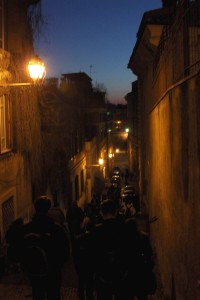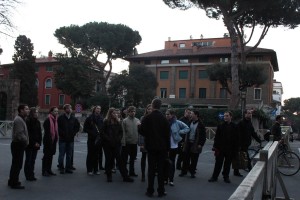With the help of our seminarians and priests studying in Rome, we will be able to participate in one of the most ancient Lenten practices of the Roman Church. Dating back to the late second or early third century, the Bishop of Rome would celebrate Mass in parishes around the city. By the fifth century, there was a fixed calendar in place for the dates of those liturgies.
Today, it has become the practice of the North American College to “host” the English speaking stational churches liturgies. Each day Mass is also celebrated in German and Italian and for many years the Pope has celebrated the Ash Wednesday liturgy at the first of the stational churches. We begin our pilgrimage with a reflection by Patrick Lewis and photos by Fr. Justin Huber.
Santa Sabina
Today the Church begins Lent, the season of prayer, penance, and almsgiving that prepares Catholics for the coming of Easter. For seminarians and priests at the Pontifical North American College in Rome, Ash Wednesday begins the pilgrimages to the station churches in Rome.
Seminarians and priests gathered early in the morning at the Pontifical North American College to make their trek out to Santa Sabina. The sacristans, masters of ceremonies, choir, lectors, and acolytes arrived at the quiet church early to ensure that everything was set up and the Mass was prepared to be celebrated with due reverence. I joined a small group of seminarians and a priest and headed out toward Santa Sabina around 5:45AM. Walking along the Tiber in the cold, brisk darkness of the morning, we prayed the rosary and quietly made our way to the church. As I headed up the cobbled-stoned street that goes up the Aventine Hill, the sun began to rise.
The entire community from the Pontifical North American College and Casa Santa Maria gathered for Mass at Santa Sabina, the first of the station churches. Many other English speakers joined the College for the Mass. Students who are studying abroad in Rome and other people from around the city joined us for Mass. The 6:45AM Mass was somber, as the community entered into this holy penitential season.
Santa Sabina has been a place of worship since early in the second century. St. Sabina, a Roman matron from the second century, lived at or near the sight of this church. According to tradition, Sabina was a widow who was converted to the faith by her slave, Seraphia. The current church was built in the fifth century. The church was remodeled many times. The priests and servers sit in a choir section walled off with a marble rail. Pillars line the massive structure. Tombs from throughout the history of the Church line the walls and floors. Saints and martyrs since the time of the early Church have prayed at this holy sanctuary.
Santa Sabina is a particularly powerful church in which to begin the Lenten season not only because it is the traditional Ash Wednesday church, but because of the treasures that are found there. For example, one of the doors to the entrance has a panel with a carved wooden image that is one of the oldest crucifixion scenes in existence. Also, a small casket underneath the high altar contains the relics of various martyrs, including Santa Sabina herself. The image of Christ crucified and the presence of the martyrs are a fitting reminder that we should offer ourselves completely to God, inviting him into our lives and withholding nothing from him this Lent.
For “New Men” who are experiencing their first Lent in Rome, the Mass at Santa Sabina was a powerful introduction to the richness of the Lenten tradition in Rome. For those of us who have studied in Rome for a few years, Ash Wednesday and the church of Santa Sabina will be forever linked in our memories. After the Mass, we left Santa Sabina with ash on our foreheads, to go out and recommit ourselves to the Lord this Lenten season.



